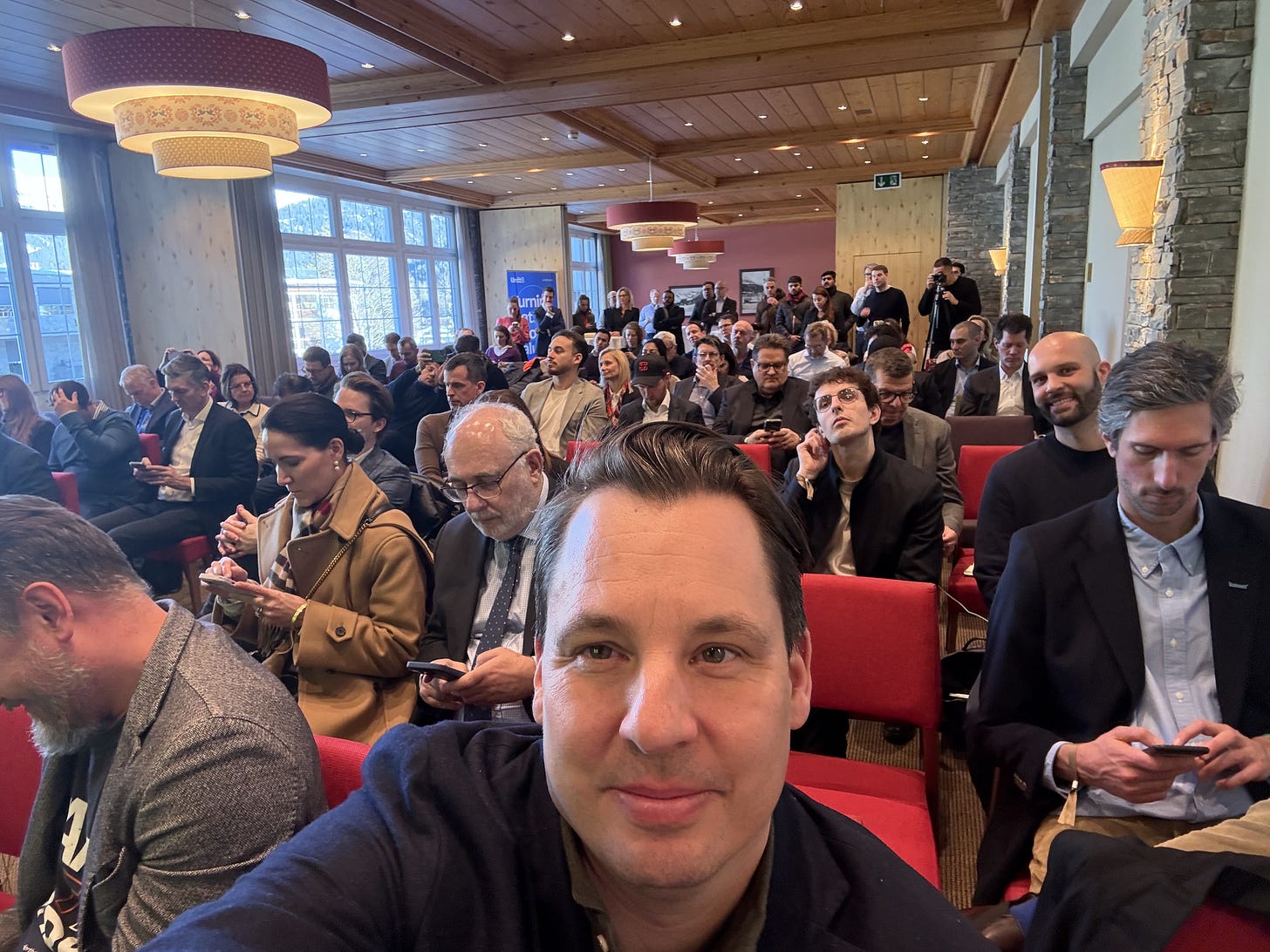Fresh Back from the WEF: Key Takeaways on Stablecoins, Tokenization, and AI.
My insights from the WEF on three major technological trends shaping the global landscape: stablecoins, tokenization, and artificial intelligence.
The US View on Europe: A Competitiveness Crisis?
Mario Draghi’s EU Competitiveness Report best summarized the issue: "My concern is not that we will suddenly find ourselves poor and subservient to others." Yet, Christine Lagarde and Ursula von der Leyen emphasized the need to make the EU more hospitable to innovation. Despite these statements, skepticism about Europe's technological competitiveness remains. Prominent voices in the US tech and investment community, such as those on the “All-In” and “BG2” podcasts, argue that Europe has become a "bucket case," lagging behind in innovation and financial markets.
The reality is stark: The U.S. continues to dominate AI and crypto investments, leveraging technology as a national security imperative. European companies are constrained by regulatory complexity and a fragmented market. Silicon Valley’s influence in AI is reinforced by its early adoption of GPU-based computation, with NVIDIA at the forefront.
Stablecoins: The Future of Digital Payments?
Stablecoins became a hot topic, with discussions focusing on Circle, the leading US-regulated stablecoin. Trump’s crypto executive order notably reinforced the US government's position on dollar-backed stablecoins: "Promoting and protecting the sovereignty of the United States dollar, including through actions to promote the development and growth of lawful and legitimate dollar-backed stablecoins worldwide."
My main takeaways were:
§ Stablecoins are becoming the new payment rail for cross-border transactions and tokenization.
§ No serious European competitor to Circle is on the horizon.
§ Tether, meanwhile, has absconded to El Salvador, but remains under indirect US influence.
§ In my view stablecoins serve as a leading indicator for blockchain adoption, reflecting broader financial digitization trends.
Tokenization: The Trillion-Dollar Opportunity
Tokenization of real-world assets (RWAs) is progressing rapidly, as Wall Street giants like JPMorgan and Goldman Sachs embrace this trend. Digital Asset, a leading player, anticipates $3.6 trillion in RWAs and $1.5 trillion in monthly transaction volume. The U.S. is utilizing its financial system to extend its dominance in equity trading into private assets. The question remains: will Europe catch up, or will it continue to watch from the sidelines?
Autonomous Vehicles and the Changing Face of Warfare
The intersection of AI and autonomous vehicles—both in civilian and military applications—was another key theme at WEF. Waymo’s advancements in self-driving technology contrast with the increasing use of drones in modern conflicts.
- In 2024, an estimated 2 million drones will be produced, far outpacing artillery shell production.
- These drones, costing as little as $500, are becoming more autonomous and cost-efficient.
- Their impact on warfare—most notably in Ukraine—illustrates how they are shifting the economics of military engagement.
My takeaway is that as autonomous capabilities increase, so does their potential as a security threat, especially in coordinated swarm attacks.
The AI Race: The US, Trump, and Global Economic Strength
Underlying all these discussions was a broader theme: the dominance of AI as a driver of economic strength. The U.S. is investing over $500 billion in infrastructure projects (e.g., “Stargate” initiatives) to maintain its lead in databases and chips. Meanwhile, constraints in AI chips impact even Switzerland, highlighting global supply chain dependencies. The energy arms race with China will be crucial in determining supremacy in AI computational power.
Europe's Tech Crisis: Is It Doomed to Repeat Past Failures?
The U.S. views Europe as lagging and burdened by heavy regulation. In numerous private discussions, opinion leaders concurred that the absence of a genuine European Common Market has hampered European competitiveness. Simultaneously, new regulations like MiCAR threaten to stifle innovation instead of encouraging it. The dearth of European digital giants is not due to a lack of talent, but rather a lack of financial and structural support. If Europe fails to take decisive action, it risks falling further behind in both AI and crypto.
How to Build Digital Resilience in the Tech Race
The global tech race concerns national security and economic sovereignty. Europe must shift from a defensive, regulatory-first mindset to an offensive, innovation-driven approach. Emphasize acceleration and risk-taking. Acknowledge that foreign technology will shape our daily lives (e.g., Tesla, drones). Invest in “European-made” tech rather than relying on imported solutions.
Switzerland: A Blueprint for Success
Switzerland serves as an intriguing case study as a small nation that has effectively positioned itself in fintech and crypto.
As VC investor Michael Jackson (not the singer) stated: "Switzerland might be Europe’s last, best hope."
Our strengths are rooted in a decentralized, pragmatic approach to regulation, a vibrant ecosystem supported by research, open-source contributions, financial expertise, and a readiness to collaborate with allies like the US and the UK.
However, Switzerland cannot succeed alone. Large corporations and governments must actively support Swiss-made technology instead of relying on international giants.
Conclusion: Europe at a Crossroads
The WEF discussions highlighted the urgent need for Europe to reevaluate its approach to technology. The narrative that "Europe doesn’t dare enough" oversimplifies the issue. The real problem is structural: the lack of a unified market and inadequate financial resources to scale innovations.
While Europe aspires to create its own Silicon Valley, it lacks the capital flow necessary to maintain tech leadership. Microsoft is investing $80 billion in AI infrastructure this year—entirely from its existing cash flow. No European company can compete with that.
If Europe wants to compete, it must:
1. Stop over-regulating and start enabling growth.
2. Build an actual common market that supports innovation.
3. Learn from pragmatic, open, and decentralized models like Switzerland.
The future of European tech leadership hangs in the balance. Will it take the necessary steps to secure victory in the global tech race, or will it remain a mere spectator?
The choice is ours!




